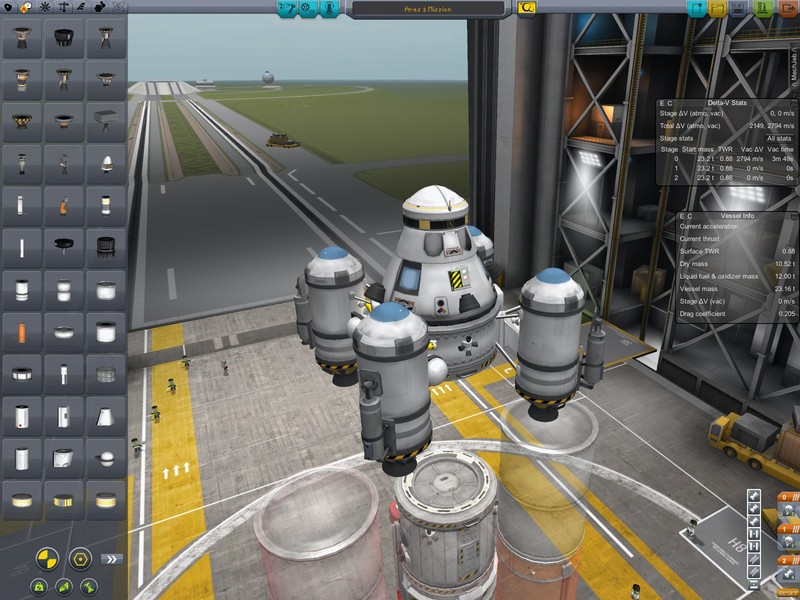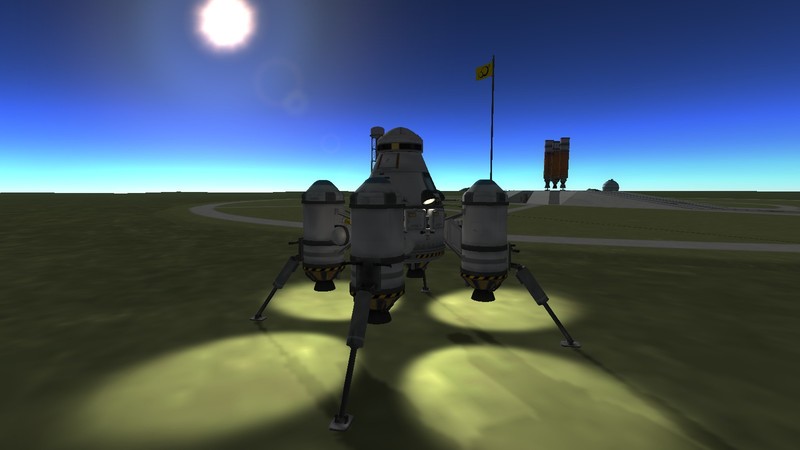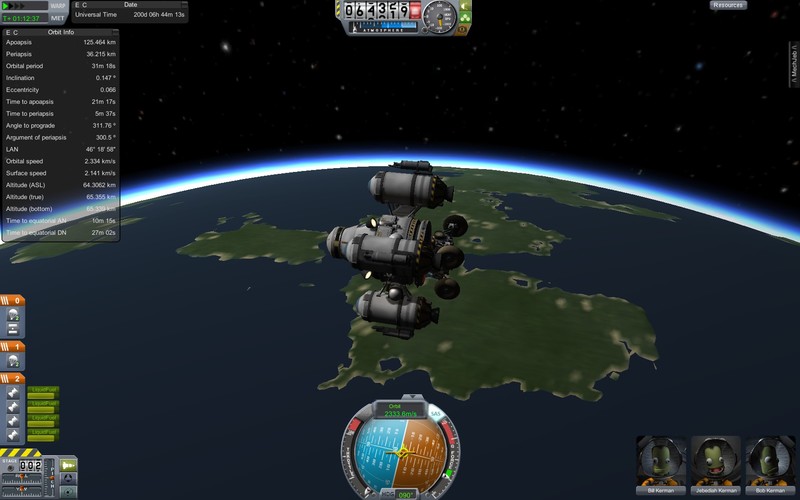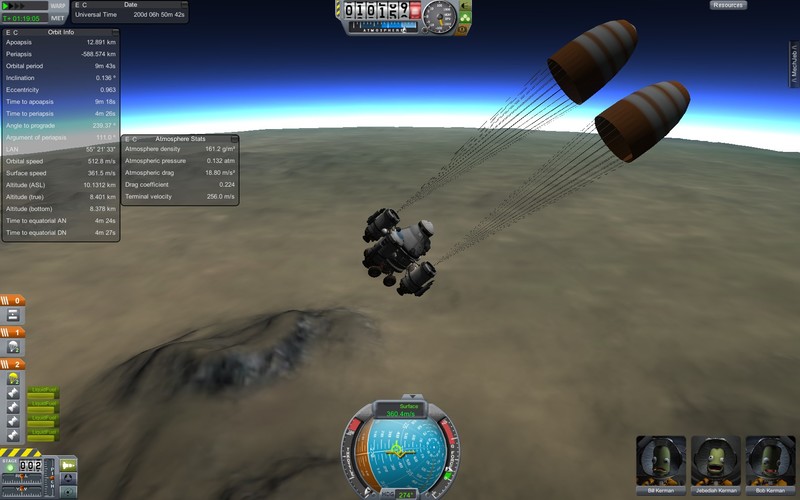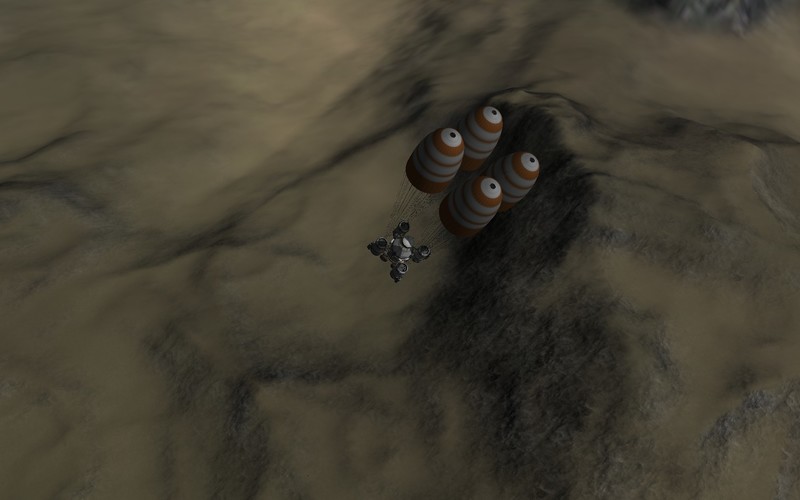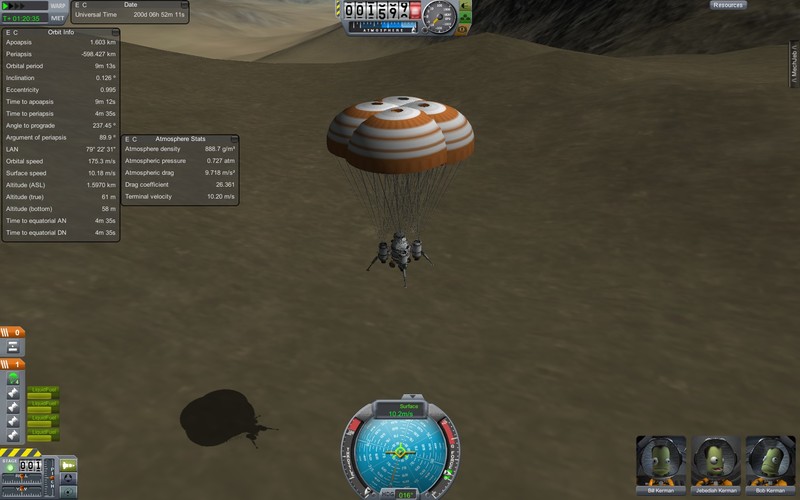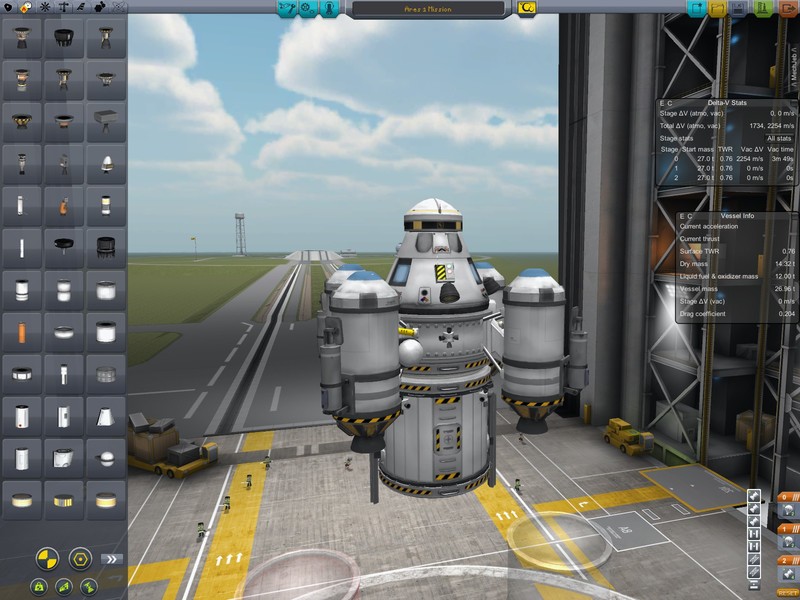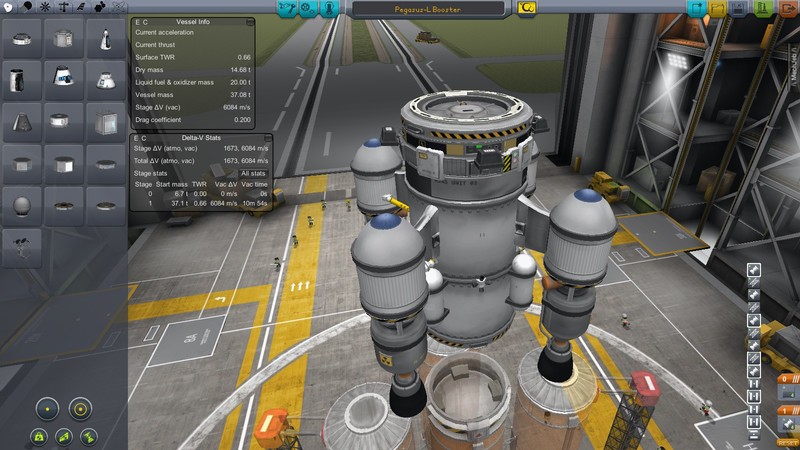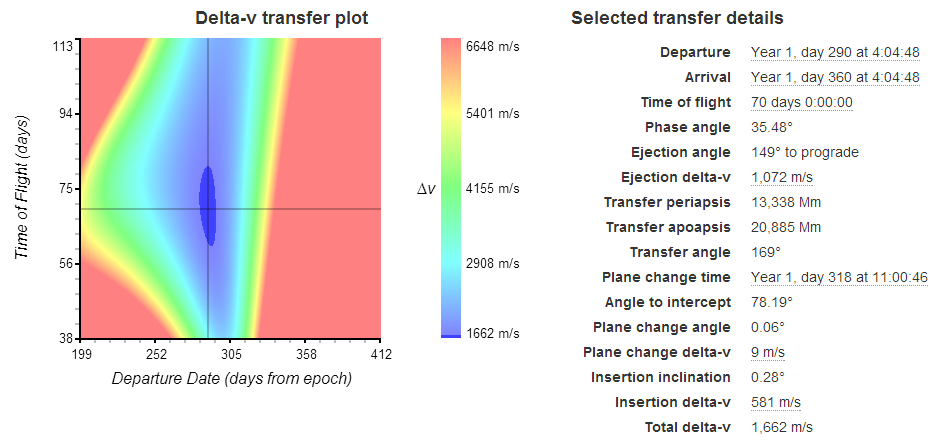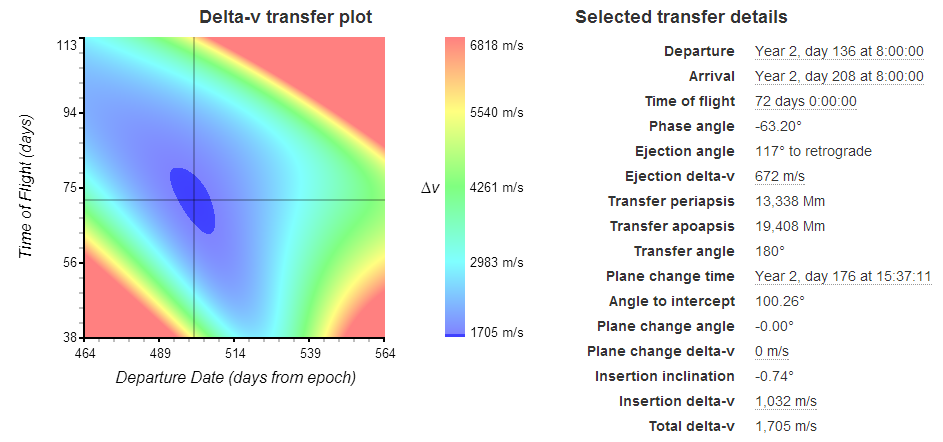The Ares 1 Mission
First manned landing on the Red Planet
After the success of the robotic missions to Duna and Eve, landing kerbonauts on the Red Planet became the next big priority of the agency. Such an ambitious mission required preparation and planning on a whole new level. For one, a manned mission implies a lander capable of lifting back to orbit and an interplenatary ship capable of taking that lander to Duna and back to Kerbin. The distance to the Red Planet, combined with the limitations imposed by launch windows, also require a one-year mission, complicating the logistics of life support.
Fortunately, the manned Orion mission to Minmus had tested much of the precursor technology required for interplenatary exploration, and so the Ares mission derived much of the hardware from tested technology.
The core mission element was the Ares lander.
A derivative of the Orion lander tested on Minmus, this craft was tailored to the specifications of the Duna mission. Duna's atmosphere is so thin than parachutes are not enough for landing, making powered descent a requirement for a soft landing. And taking off from the surface alone requires a whopping 1400 m/s. For these reasons, the Ares 1 lander carries four powerful engines and enough delta-v to land on the Mun and ascend back to orbit twice.
With capacity for three kerbonauts, the lander provides limited life support, meaning surface operations could last only a few days. In order to extend their range on the surface, the kerbonauts would take with them a two-seat dune buggy.
Similar to the buggy used on the Mun, it relies on internal power generated by twin RTGs, since solar power is limited at the distance of Duna.
These two components, the lander and the buggy, were thoroughly tested on the surface of Kerbin.
The landing portion of the mission was simulated on Kerbin. The lander and buggy were launched separately, docked together while in orbit, and then landed with the buggy attached to the underside of the lander, as would be done on Duna.
Kerbin tests demonstrated the reliability of the hardware and provided valuable training experience for the kerbonauts.
The life support of the Ares 1 lander is insufficient for a mission of this length. A separate habitat module that would remain in orbit docked to the interplanetary booster would provide the necessary supplies for an extended stay in Duna's orbit, waiting for the return window to open.
The final and crucial part of the mission was the Pegasus-L Interplanetary Booster. Derived from the Orion booster, the Pegasus belongs to a next-generation class of modular boosters designed around the LV-N nuclear thermal engine, which provides extremely high specific impulse in vacuum operations.
The L variant of the booster carries reduced fuel reserves and is sufficient for a mission to Duna. With over 6000 m/s of delta-v by itself, it is capable of pushing over 27 tonnes of payload to Duna and back thanks to the high efficiency of its engines. Docking ports on both ends allow high modularity and reusability. This new family of boosters would no longer be deorbited after use, but docked with Space Station One for refuelling and reused in future missions.
The Ares 1 Mission was to be the first huge milestone in terms of the manned exploration of the solar system. While the main objective was landing kerbonauts on the surface of Duna, mission planners decided a secondary objective could be addressed if circumstances permitted. The power system of the Duna Express lander, which functions as a valuable science station on the Red Planet, was approaching the end of its operational life. It would be an easy task to replace the system to extend the life of the lander, if doing did not endanger the success of the main mission.
| |
|
|
Return launch window porckhop plot:
After the Kerbin tests and the wait for the launch window to open, the Ares Mission finally started its final preparations in orbit.
Continue to Preparations ...
